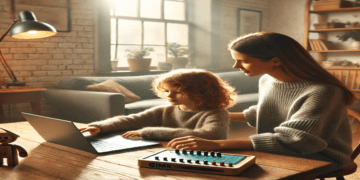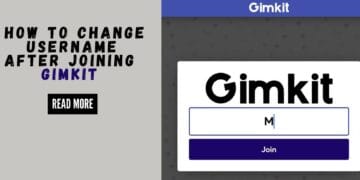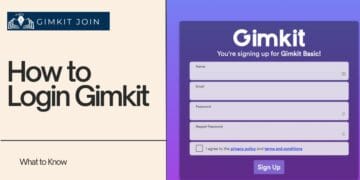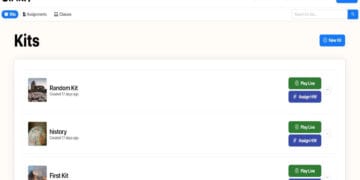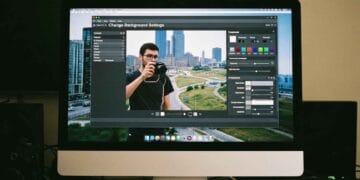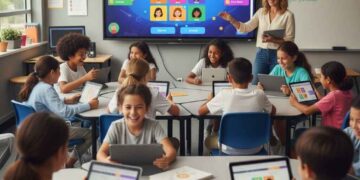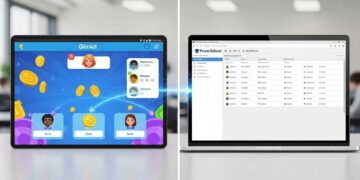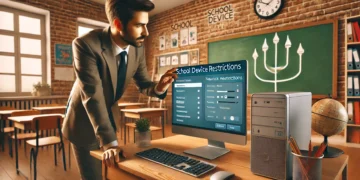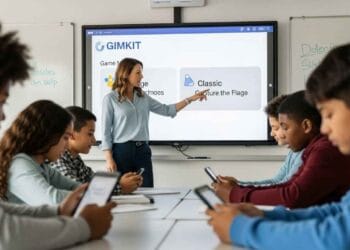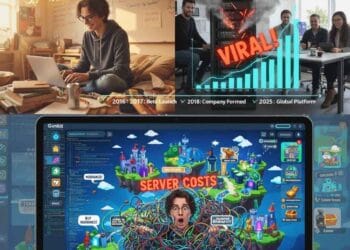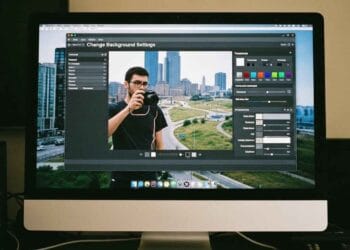Gimkit Join Codes, Play Tips & Troubleshooting
From a teacher who’s been in the trenches with you—not just reading the manual.
Look, I get it. You’re trying to set up Gimkit for tomorrow’s class, something’s not working, and the official docs aren’t helping. Or you’re a student trying to join a Gimkit game and getting error codes that make no sense. I’ve been there. Like, literally last Thursday, when my entire 8th period couldn’t join because I forgot one tiny setting. That’s why I created this website—to share everything I wish someone had told me two years ago when I first started using Gimkit.
QUICK ACCESS - WHAT YOU NEED RIGHT NOW
🎓
Students: Join Gimkit Game
Your teacher gave you a code? Here’s what to do, and every fix if it doesn’t work.
Show Joining Steps
The actual steps:
- Go to gimkit.com/join
- Type in that 6-digit code your teacher shared.
- Pick a username (ask your teacher first!).
- Hit that blue “Join Game” button.
Not working? Here’s what usually fixes it:
- Why your game code might be invalid.
- How to change your username after you join (yes, you can do this!).
👩🏫
Teachers: Starting Your First Game
Head to gimkit.com to sign in. Everything you need from signup to dashboard mastery.
View Setup Checklist
Your First Steps:
- How to sign up (it’s free!)
- Login help if you forgot your password (we’ve all been there)
- Making sense of your dashboard (it’s less confusing than it looks)
👪
Parents: Welcome!
Is this educational? How can you help at home? Get the complete parent guide.
Essential Questions
- Complete parent guide to Gimkit (everything you need to know)
- Using Gimkit with your own kids (yes, it works at home)
- Family game night ideas (actually fun!)
Quick disclaimer: I’m not affiliated with Gimkit Inc. This is just a teacher helping other teachers (and students, and parents). For official support, go to Gimkit.com.
Hi, I'm Amelia. Let Me Tell You Why I Made This Site
So, picture this: It’s October 2022. I’m a middle school teacher who just discovered Gimkit, and I’m SO excited to try it with my 7th graders. I spend an hour creating this perfect quiz about the Revolutionary War. Class starts. I launch the game. Kids pull out their devices.
That day was humbling. But it taught me something important: the official documentation doesn’t always cover the real problems teachers face. Like, why does Gimkit sometimes just… not work? Why do certain game modes crash with large classes? Which features are actually worth the Pro subscription?
Here's what I've learned since then
I’ve been using Gimkit almost daily for over two years now. I’ve taught grades 6-8 with it. I’ve made every mistake possible (seriously, ask me about the time I accidentally started a game during another teacher’s class period). I’ve figured out which features are genuinely useful and which ones are just… there.
My actual experience
Used Gimkit with 200+ students across different grade levels
Tested every single game mode in real classrooms (even the weird ones)
Helped dozens of teachers at my school troubleshoot their setups
Spent way too much time figuring out why things break
My credentials (if that matters to you)
- Middle school teaching license
- ISTE member (that’s the tech in education organization)
- Google Certified Educator
- But honestly? My best credential is messing up enough times to know how to fix things
Why you should trust what I write
Gimkit does not pay me. I don’t get kickbacks. If something doesn’t work well, I’ll tell you. (Looking at you, Trust No One mode with 30+ students.) And when something is genuinely great, I’ll let you know that too.
I also believe in constructivist learning—the idea that students learn by doing and playing. That’s why Gimkit works when it works. But theory doesn’t help when your game won’t load, so this site focuses on practical solutions.
My promise to you
Every guide on this site comes from real classroom experience. If I recommend something, it’s because I’ve actually used it. If I warn you about something, it’s because I’ve experienced the pain myself.
Okay, enough about me. Let’s help you figure out Gimkit.

My Credentials (Actual Experience)
✅Used Gimkit almost daily for over two years with 200+ students.
✅Tested every single game mode in real classrooms (even the weird ones).
✅Middle school teaching license and Google Certified Educator.
Who This Website Actually Helps
I’ve organized everything by what you’re trying to do, not by what I think makes sense. Use these content blocks to find deep dives.

For Teachers (That's Probably You)
You’re here because:
- You need to set up Gimkit for tomorrow, and you don’t have time to read a 50-page manual
- Something broke, and you need to fix it now
- You’re trying to decide if the Pro version is worth it (spoiler: depends on what you teach)
- You want ideas for actually engaging your students (not just busywork)
Here's what I've got for you:
- How to track what students actually learned (beyond just scores)
- Making Gimkit work with Google Classroom (it’s possible, just not obvious)
- Whether you should upgrade to Pro (honest breakdown)
- How to make boring review actually exciting
Stuff other teachers found helpful:
- Getting kids engaged in the first 5 minutes (when they’re still half-asleep)
- Using Gimkit for actual assessment (not just fun)
- Mistakes I made so you don’t have to

For Students (Yes, This Section is For You)
Your teacher’s using Gimkit and you want to:
- Actually join the game without errors
- Understand what these different game modes even are
- Maybe get better at winning (ethically—I’m not helping you cheat)
- Figure out how to earn more coins
I can help with:
- Strategies that actually work (no cheats, just smart playing)
- How to get more coins the right way
Stuff students actually ask about:
- Which game mode gives the most coins? (Classic, usually)
- Funny username ideas (because why not)

For Parents (Welcome!)
Your kid keeps talking about “Gimkit” and you have questions:
- Is this actually educational or just a game?
- How do you help them when they can’t get it to work?
- Should you use it at home for practice?
Let me help:
- Complete parent guide to Gimkit (everything you need to know)
- Using Gimkit with your own kids (yes, it works at home)
Family game night ideas (actually fun!)
📚 Start Here: My Most Helpful Guides
These are the guides people actually use. I know because I check which ones get the most questions and thank-you emails
🔧
"Gimkit Won't Work!"
The Complete Troubleshooting Guide
This is the guide I wish had existed when I started. It covers every single error I’ve encountered (and trust me, I’ve seen them all).
Real talk: 90% of problems come from three things—internet connection, browser issues, or incorrect settings. This guide walks through all of them.
🎮
Understanding Game Modes
(And When to Use Each One)
Classic? Blastball? Trust No One? Fishtopia?
I’ve used them all extensively. Some work better than others depending on your situation.
What I learned: Classic is reliable but can get boring. Blastball is chaos (good chaos). Trust No One needs mature students. Fishtopia takes forever, but kids love it.
⚖️
Gimkit vs. Blooket
Which Should You Actually Use?
Both are good. They’re just good at different things.
My take: Gimkit is better for reinforcement and practice. Blooket is better for pure engagement. I use both, just for different purposes.
🎮 LET'S TALK GAME MODES
Gimkit has a bunch of game modes. Some are fantastic. Some are… fine. Here’s what I’ve learned from using each one with actual middle schoolers.

Classic Mode
The original. Students answer questions, earn money, buy power-ups.
When I use it: Quick reviews, daily warm-ups, when I need something reliable.
Honest assessment: Works every time, but can feel repetitive if you overuse it.
Image Source: Gimkit

Dig It Up
Excavation-themed. Students dig for treasures while answering questions.
When I use it: Social studies (obviously), geology units, when we’re doing anything about history or artifacts.
Image Source: Gimkit

Blastball
It’s basically soccer meets trivia. Answer questions to move the ball toward the goal.
When I use it: Friday afternoons, before breaks, when energy is low and I need to wake them up.
→ How to actually win at Blastball
Warning: This gets LOUD. Like, really loud. Your neighboring teacher might complain. Worth it though.
Image Source: Gimkit

Don't Look Down
Students stand on a platform that shrinks when they get questions wrong.
When I use it: Quick confidence builders, when I want fast-paced energy.
Heads up: Some students get stressed by the time pressure. Know your class.
Image Source: Gimkit

Fishtopia
An adventure game where students explore, answer questions, and complete missions.
When I use it: Long review sessions, when students need a change of pace.
Reality check: This takes 30-45 minutes minimum. Don’t start it with 20 minutes left in class. (Learned that one the hard way.)
Image Source: Gimkit

Team Mode
Same as Classic, but students work together.
When I use it: Group projects, when I want to build collaboration skills, or when I have students at very different levels.
→ Competition vs. cooperation strategies | Making teamwork actually work
Pro tip: Assign teams intentionally. Random teams can be a disaster.
Image Source: Gimkit
🚨 When Things Go Wrong (Because They Will)
Let me save you some frustration. Here are the problems I see most often, and what actually fixes them.
Students Can't Join the Game
Why this happens:
- Typo in the code
- Game already ended
- Teacher hasn’t started it yet
- (Rarely) Gimkit’s servers are having issue.
The Game is Lagging Like Crazy
Usually this is either your internet or too many people on one network.
Quick fixes:
- Close other tabs (especially YouTube)
- Have students close apps they’re not using
- Reduce number of players if possible
- Switch to wired connection if you can
→ Permanent lag solutions | Optimizing different devices
Real talk: Sometimes school WiFi just can’t handle 30 devices gaming simultaneously. Talk to your IT person about getting Gimkit whitelisted for priority bandwidth.
Login Issues
Forgot your password? Browser being weird?
What works:
- Password reset via email (check spam folder)
- Try signing in with Google or Microsoft instead
- Clear your browser’s cookies and cache
- Make sure you’re actually on gimkit.com/login
Invalid Game Code
Why this happens:
- Typo in the code
- Game already ended
- Teacher hasn’t started it yet
- (Rarely) Gimkit’s servers are having issues
Other annoying problems I’ve solved:
📂 FIND WHAT YOU ACTUALLY NEED
I’ve organized everything by what you’re trying to do. Not by what I think makes sense, but by what people actually search for.
Just Starting Out?
Want to Get Better at Playing?
Technical Problems?
For Teachers: Making It Work in Your Classroom
📊 Assessment Stuff
🔗 Integration with other stuff
✨ Advanced stuff
🏆 By grade level
- Overview for K-12
- PreK and Kindergarten (possible but tricky)
- Elementary
- Middle school (my specialty)
- High school
- College/university
Classroom Management & Usage
🍎 Classroom Management Tips
🌐 Non-Traditional Uses
🧩 Special Education & Inclusion
📊 Platform Comparisons
Deciding between tools? I’ve used all of these:
Student Strategies & Subjects
🔬 By Subject
🆕 Community & Updates
Quick disclaimer: I’m not affiliated with Gimkit Inc. This is just a teacher helping other teachers (and students, and parents). For official support, go to Gimkit.com.
What's New Around Here
I update this website pretty regularly as I discover new things or when Gimkit releases updates.
Recent stuff:
- What’s coming in 2025 – Based on what I’m seeing in beta
- Roadmap predictions – My educated guesses
- Latest classroom features – Just rolled out
Case study: how Gimkit affected test scores – Actual data from my school
Older but still useful:
- Why Gimkit is more than entertainment – The educational philosophy
- Community tips I’ve collected – From teachers who reached out
- How to join beta testing – If you want early access
Also worth reading: US Dept of Education on student privacy – Important stuff about data protection
❓ QUESTIONS PEOPLE ACTUALLY ASK
Here are the detailed answers to the most common questions.
Is Gimkit free? (Detailed Free vs. Pro Breakdown)
Yes and no. There’s a free version (Gimkit Basic) that’s honestly pretty good:
- Host games with up to 60 students (enough for most classes)
- Make unlimited quizzes
- Get some game modes (they rotate which ones)
- Basic progress tracking
Gimkit Pro costs $9.99/month or $59.99/year and adds:
- ALL game modes, all the time
- Homework assignments (huge time-saver)
- Better analytics
- More customization
My honest take: I used it for free for six months before upgrading. For occasional use, free is fine. For daily use, Pro is worth it.
Do students need accounts?
For live games: Nope! They just need the game code and a username. It takes 30 seconds to join.
For homework: Yes. They’ll need a free account so Gimkit can track their work.
This is actually one of my favorite things about Gimkit—no account barriers for quick classroom games.
What devices work?
Pretty much anything with a browser:
- Computers (Windows, Mac, Chromebooks)
- iPads and tablets
- Phones (works but not ideal—small screen)
What you need:
- Decent internet (5 Mbps minimum)
- Updated browser (Chrome, Safari, Edge, Firefox)
- JavaScript enabled (it usually is)
From experience: Chromebooks work great. iPads are good. Phones are okay for quick joins but frustrating for longer games.
Can I use this with Google Classroom?
Yes, but it’s not automatic. Here’s what works:
- Post game links as assignments in Google Classroom
- Export scores from Gimkit, import to Google Classroom gradebook
- Use both platforms together (I do this daily)
It takes an extra step or two, but it’s manageable once you get the routine down.
How many students can play?
Free version: 60 students max
Pro version: Unlimited
Honestly, 60 is enough for almost everyone. I’ve only hit that limit twice (whole-grade competitions).
Is this appropriate for younger kids?
Depends on the kid and the content you create.
Works well for:
- Grades 3-12 independently
- Grades K-2 with teacher help
Safety stuff: Gimkit is COPPA and FERPA compliant, which means they take student privacy seriously.
→ Using Gimkit at different grade levels → What is COPPA? (FTC explanation) → Understanding FERPA (US Department of Education)
Can I make my own questions?
Absolutely! You can:
- Create questions from scratch
- Import from spreadsheets (saves SO much time)
- Use Gimkit’s existing question bank for inspiration
- Share with other teachers
Creating good questions is its own skill. It took me a while to get decent at it.
→ Writing better quiz questions → Bloom’s Taxonomy for question writing – Super helpful framework
What if my school blocks Gimkit?
This happens more than it should. Try this:
- Talk to your IT department – explain it’s educational
- Show them Gimkit’s privacy policy and educational benefits
- Ask them to whitelist gimkit.com
- As a last resort, use mobile hotspot (not ideal)
I’ve had to advocate for educational gaming sites before. Persistence helps.
→ Guide to getting it unblocked → CoSN advocacy resources – Consortium for School Networking
Additional help:
- Gimkit’s official help center
- Gimkit community forum
- Edutopia’s edtech section – Broader perspective
Why Listen to Me?
Fair question. The internet is full of people claiming expertise they don’t have.
I'm Not Paid by Gimkit
Zero affiliation. No sponsorship. No kickbacks.
This means I can tell you when something doesn’t work well. (Like how Trust No One mode gets chaotic with more than 25 students, or how the homework grading interface could be better.)
And when something is genuinely great, you know I mean it.
I've Actually Used This Stuff
Every guide comes from real classroom experience. I’m not just rewriting the official docs—I’m sharing what I’ve learned from two years of daily use.
Sometimes that means admitting I screwed up. Like the time I tried Fishtopia with only 15 minutes left in class. (Don’t do that.)
I Keep Things Current
Gimkit updates frequently. When features change, I update guides. When I discover new tricks, I write about them.
I'm a Real Teacher
Not a tech blogger. Not a marketing person. A middle school teacher who needed these answers and couldn’t find them.
All content reflects actual classroom dynamics, real student behavior, and practical constraints teachers face.
Questions Are Welcome
Stuck on something? Email me: admin@gimkitjoin.net
I can’t provide official Gimkit support (that’s what Gimkit’s help center is for). But I can share what’s worked for me and other teachers.
Why you should trust what I write
Gimkit does not pay me. I don’t get kickbacks. If something doesn’t work well, I’ll tell you. (Looking at you, Trust No One mode with 30+ students.) And when something is genuinely great, I’ll let you know that too.
I also believe in constructivist learning—the idea that students learn by doing and playing. That’s why Gimkit works when it works. But theory doesn’t help when your game won’t load, so this site focuses on practical solutions.
My promise to you
Every guide on this site comes from real classroom experience. If I recommend something, it’s because I’ve actually used it. If I warn you about something, it’s because I’ve experienced the pain myself.
Okay, enough about me. Let’s help you figure out Gimkit.
📬 Stay in Touch
Get occasional updates: You can email me anytime. I am available for you.
I’m not going to spam you. Just helpful tips when I discover something worth sharing.
Connect elsewhere:
For Teachers Who Want to Contribute
Share your story: Used Gimkit in an interesting way? Had a breakthrough moment? Your story might help other teachers.
Write a guest post: If you’ve got expertise with Gimkit in specific contexts (special ed, advanced placement, different subjects), I’d love to feature your insights.
Just want to chat: I’m always interested in connecting with other teachers doing interesting things.
When You Need Help
For platform help: I can share what’s worked for me, but I can’t provide official Gimkit support.
Contact me at my email mentioned above.
Response time: Usually 24-48 hours
For official support:
- Gimkit help center – Account, billing, technical issues
- Gimkit community – Other teachers’ experiences
The Legal Stuff
About This Site’s Independence
GimkitJoin.net is completely independent. I’m not affiliated with, endorsed by, or connected to Gimkit Inc. “Gimkit” is their trademark. I use it here for educational commentary, which is protected under fair use. Think of this like a fan site, but for educational technology instead of movies.
Ready to Get Started?
Whether you’re setting up your first game or looking to level up your Gimkit skills, you’re in the right place.
Next steps:
→ Browse all guides (find exactly what you need) → Read recent updates (stay current) → Email me with questions (I actually respond) → Join the community (connect with other teachers)
Looking for something specific? Use the search bar at the top, or just email me directly.




